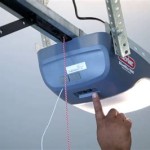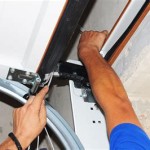Ways To Hang Bicycles In Garage
Effectively managing space within a garage is often a significant challenge for homeowners, particularly those with bicycles. Bicycles, while practical and enjoyable, can occupy considerable floor space, making it difficult to navigate the garage or utilize it for other purposes. Employing strategies for hanging bicycles offers a solution to reclaim valuable square footage and maintain an organized environment. Several methods are available, each with its own advantages and disadvantages, catering to varying garage layouts, bicycle types, and user preferences.
Ceiling-Mounted Bike Hoists
Ceiling-mounted bike hoists are a popular option for maximizing vertical space within a garage. These systems typically consist of a pulley system with hooks that attach to the bicycle's handlebars and seat. By pulling on a rope or cable, the bicycle is lifted vertically and secured near the ceiling. This method is particularly well-suited for garages with high ceilings, as it allows bicycles to be stored completely out of the way. The lifting mechanism minimizes the physical effort required to store and retrieve bicycles, making it accessible to a wide range of users.
The installation of a ceiling-mounted bike hoist generally involves securing the mounting brackets to the ceiling joists. It is crucial to locate the joists accurately to ensure the system can support the weight of the bicycle safely. Many hoists come with detailed instructions and mounting hardware to facilitate the installation process. However, depending on the garage's construction, additional hardware or professional assistance may be necessary.
One of the primary advantages of ceiling-mounted bike hoists is their ability to store bicycles high above the floor, freeing up significant space. They are also relatively easy to use, with a simple lifting and lowering mechanism. However, this method may not be ideal for garages with low ceilings or for individuals with physical limitations that make it difficult to lift bicycles overhead. Furthermore, the process of lifting and lowering a bicycle can be cumbersome if performed frequently.
When selecting a ceiling-mounted bike hoist, it is important to consider the weight capacity of the system. Ensure that the hoist is capable of supporting the weight of the heaviest bicycle to be stored. It is also beneficial to choose a hoist with a locking mechanism to prevent accidental lowering of the bicycle. Regular inspection of the ropes, pulleys, and mounting hardware is recommended to ensure the system remains in good working order.
Wall-Mounted Bike Racks
Wall-mounted bike racks offer another effective solution for storing bicycles in a garage. These racks typically consist of hooks or arms that attach to the wall, allowing bicycles to be hung horizontally or vertically. Wall-mounted racks are available in a variety of designs, catering to different bicycle types and storage preferences. Horizontal racks are often used for displaying bicycles, while vertical racks are more space-efficient for storing multiple bicycles in a row.
The installation of a wall-mounted bike rack typically involves attaching the rack to the wall studs using screws. It is crucial to locate the studs accurately to ensure the rack can support the weight of the bicycle. Some racks may require additional reinforcement, such as backing boards, to distribute the weight more evenly. The installation process is generally straightforward, but it is important to follow the manufacturer's instructions carefully.
One of the primary advantages of wall-mounted bike racks is their versatility. They can be installed at varying heights, allowing users to customize the storage solution to their specific needs. Wall-mounted racks also require less overhead space compared to ceiling-mounted hoists, making them suitable for garages with lower ceilings. Furthermore, accessing bicycles stored on wall-mounted racks is generally easier and faster than accessing bicycles stored on ceiling-mounted hoists.
However, wall-mounted bike racks can occupy considerable wall space, which may be a limiting factor in some garages. They also require users to lift the bicycle to a certain height to hang it on the rack, which may be challenging for some individuals. When selecting a wall-mounted bike rack, it is important to consider the weight capacity of the rack and the type of bicycles to be stored. Ensure that the rack is designed to accommodate the frame geometry and tire size of the bicycles.
Floor-Based Bike Stands
Floor-based bike stands provide a convenient and portable solution for storing bicycles in a garage. These stands typically consist of a frame that supports the bicycle's wheels or frame, keeping it upright and stable. Floor-based stands are available in a variety of designs, including single-bike stands, multi-bike stands, and adjustable stands. They are particularly useful for individuals who prefer not to mount anything to the walls or ceiling of their garage.
The installation of a floor-based bike stand is typically very simple, requiring no drilling or permanent mounting. Most stands are ready to use right out of the box, requiring only minor assembly. This makes them a good option for renters or individuals who want a flexible storage solution that can be easily moved as needed.
One of the primary advantages of floor-based bike stands is their portability. They can be easily moved around the garage to accommodate changing storage needs. They also require no permanent modifications to the garage structure. Furthermore, floor-based stands are typically more affordable than ceiling-mounted hoists or wall-mounted racks.
However, floor-based bike stands can occupy significant floor space, which may be a limiting factor in smaller garages. They also do not elevate the bicycle off the ground, which may increase the risk of damage or theft. When selecting a floor-based bike stand, it is important to consider the size and weight of the bicycles to be stored. Ensure that the stand is stable and capable of supporting the weight of the bicycles without tipping over. It is also beneficial to choose a stand with adjustable arms or wheel holders to accommodate different bicycle types and sizes.
Regardless of the chosen method, several general considerations apply to effectively hanging bicycles in a garage. Prior to installation, assessing the structural integrity of the mounting surface is crucial. Whether it's a ceiling joist or a wall stud, ensuring it can withstand the weight of the bicycle is paramount for safety and longevity of the storage solution. Using a stud finder is highly recommended to locate the center of studs or joists accurately.
Another important aspect is the spacing between bicycles. Sufficient space should be allocated to prevent the bicycles from rubbing against each other, which can cause scratches and damage. Moreover, adequate clearance should be maintained to allow for easy access to each bicycle without having to move others. Planning the layout thoughtfully can significantly enhance the usability and efficiency of the storage arrangement.
Regular maintenance of the hanging system is also essential. Periodically inspect the hardware, such as hooks, ropes, and mounting brackets, for signs of wear and tear. Tighten any loose connections and replace worn parts promptly to prevent accidents. Additionally, consider lubricating moving parts, such as pulleys, to ensure smooth operation and prolong the lifespan of the system.
Consider the finish of the hooks or racks that will be in contact with the bicycle frame. Rubberized or padded surfaces are less likely to scratch or damage the paint. If using metal hooks, ensure they are coated or wrapped to prevent direct contact with the frame. This small detail can help preserve the aesthetic appearance of the bicycles.
Finally, consider security measures to deter theft. While hanging bicycles in a garage might seem like a safe storage solution, garages are often targets for thieves. Consider using locking mechanisms, such as cable locks or U-locks, to secure the bicycles to the rack or hoist. Additionally, reinforcing the garage door and windows can further enhance security and prevent unauthorized access.

15 Practical Bike Storage Ideas Garage And Indoors

13 Bike Storage Ideas You Can Buy Or Diy 2024 Hgtv

13 Bike Storage Ideas You Can Buy Or Diy 2024 Hgtv

Garage Bike Storage Tips From A Professional The Organized Mama

13 Bike Storage Ideas You Can Buy Or Diy 2024 Hgtv

The Easiest Cheapest Way To Hang Bikes On A Wall Smallish Home
:max_bytes(150000):strip_icc()/92520642_221486639101956_9060548586112071656_n-3b1dccd8b982422eb6c233e048284713.jpg?strip=all)
18 Garage Bike Storage Ideas To Save Space

14 Garage Bike Storage Ideas For Your Space

Creative Diy Bike Storage Racks Ohmeohmy Blog

How To Hang A Bike From The Ceiling C R F T








